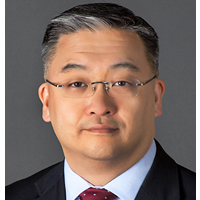An Observational Study on Clinical Outcome and Predictors of Traumatic Cervical Injury at a Tertiary Care Facility
Published on: 26th March, 2025
Introduction: Cervical spinal cord injuries (CSIs) account for 2% - 3% of trauma cases and 8.2% of trauma- related fatalities, making them a significant cause of disability and mortality. Effective management and timely interventions are essential to improve neurological and functional outcomes. This study aimed to evaluate the outcomes of patients with CSIs and identify key predictors of neurological and functional improvement.Materials and methods: This prospective observational study was conducted over 12 months at SMS Medical College, Jaipur, involving 100 patients with CSIs from C1 to C7 vertebrae. Patients presenting within one week of injury were included. Clinical evaluation was conducted using the ASIA scoring system, and functional outcomes were assessed with the Functional Independence Measure (FIM) scale. MRI findings were analyzed to classify injuries and identify critical predictors, including the presence and extent of edema and listhesis grading.Results: Significant predictors of neurological improvement included injury type, management approach, MRI findings, extent of edema (≤ 2 vs. >2 segments), and listhesis grading. Operative management and incomplete injuries showed better outcomes. The median Barthel Index improved from 4.0 preoperatively to 7.0 at four months (p < 0.001). The mean FIM score also significantly increased from 43.25 ± 26.5 to 56.8 ± 40.75 (p < 0.05). ASIA Grades C and D demonstrated significant neurological recovery, with no grade deterioration observed.Conclusion: Age, injury type, management strategy, MRI findings, extent of edema, and listhesis grading are key predictors of outcomes in CSIs. These findings emphasize the importance of early diagnosis, timely surgical intervention, and comprehensive management in improving neurological and functional recovery. Multicentric studies with larger cohorts are recommended for broader generalizability.
Forensic Insights into Multiple Stab Wounds: Autopsy Findings from a Case of Sixty Stab Wounds
Published on: 4th April, 2025
Multiple stab wounds are a critical forensic indicator, frequently linked to violent assaults, homicides, or self-inflicted injuries. These penetrating injuries result from sharp-edged weapons such as knives, daggers, or other pointed instruments. The depth, size, and severity of the wounds depend on factors including the type of weapon used, the force applied, and the anatomical location of impact. Forensic examination of stab wounds is essential in determining the manner of death—homicidal, suicidal, or accidental. Detailed analysis of wound characteristics, such as depth, trajectory, and associated injuries, aids in crime scene reconstruction. Additionally, identifying defensive wounds can indicate victim resistance, further supporting forensic interpretations. A meticulous forensic autopsy, including weapon analysis and internal organ assessment, is crucial in establishing the cause of death. These findings play a vital role in medico-legal investigations, providing key forensic evidence that supports legal proceedings and ensures justice.
















